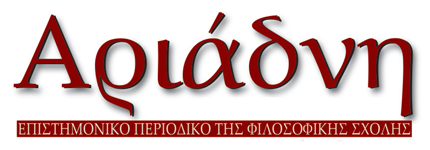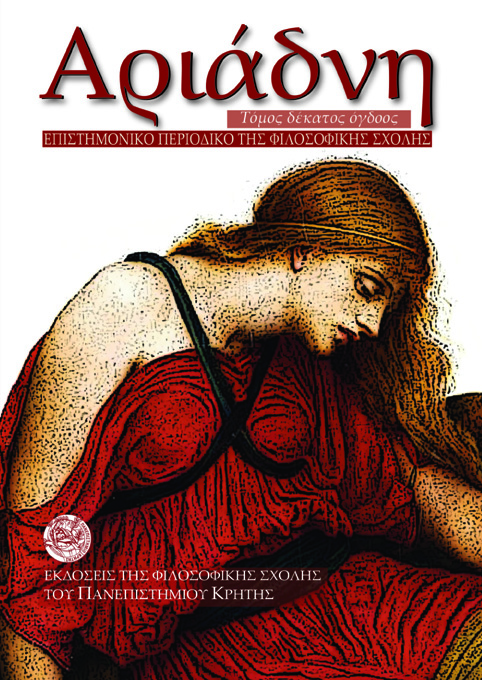Η Ολυμπία κατά την αρχαιότητα και κατά τον 18ο-19ο αιώνα, μέσα από τις ταξιδιωτικές αναφορές των ευρωπαίων περιηγητών
DOI:
https://doi.org/10.26248/ariadne.v18i0.370Περίληψη
THIS article presents the history of the sanctuary of Olympia in antiquity and in the 18th-19th centuries.
Firstly, the gradual formation of the sanctuary with many different buildings from 2800 BC to the 7th century AD is featured. Relevant information from Pindar’s “Olympian Hymns”, Strabo’s Geography, and Pausanias’s Description of Greece is presented.
Secondly, there is an account on how Olympia looked aft er its discovery in 1766 by the English archaeologist and theologist Richard Chandler. Reports by European travellers, researchers of antiquity, antiquarians and scholars are mentioned. These visited Olympia in the 18th and 19th centuries, either within the framework of the traditional tour of Europe (the so-called “Grand Tour”) or as delegates of societies of antiquarians, and have contributed to the identification of the location as an archaeological site rich in findings. Among them were the German founder of Classical Archaeology Johann Joachim Winckelmann, the English archaeologist and theologist Richard Chandler, the Consul of France in Greece Louis François Sébastien Fauvel, the French diplomat and great philhellene François Charles Hugues Laurent Pouqueville and the British archaeologist and architect John Spencer-Stanhope. Their short stays in Olympia have opened the way for the excavation and systematic research of the site (first in 1829 by the French Expédition scientifique de Morée, and after 1875 by the German Archaeological Imperial Institute).
The most recent of the numerous exhibitions on Olympia is the one which was opened on the 30th August 2012 in Berlin under the theme “Olympia of Europe and of the World”. In our times of multiple crises, Olympia could become the backbone of high European and universal ideals and firm human values.
Λήψεις
Δημοσίευση
Πώς να δημιουργήσετε Αναφορές
Τεύχος
Ενότητα
Άδεια
Οι εργασίες που δημοσιεύονται στο περιοδικό μπορούν να χρησιμοποιηθούν ελεύθερα για μη-εμπορικούς σκοπούς με την προϋπόθεση ότι γίνεται αναφορά στους συγγραφείς και την πρώτη δημοσίευση. Στην περίπτωση που το άρθρο αλλοιωθεί, τροποποιηθεί ή δημιουργηθεί κάτι νέο βασισμένο στο αρχικό, το έργο που θα προκύψει θα μπορεί να διανεμηθεί μόνο με την ίδια ή παρόμοια άδεια (Creative Commons Attribution-NonCommercial-ShareAlike 4.0 International License).


